Sir George Edwards
Posted on 16/05/2021 By Bertie
From Bouncing Bomb to Concorde
“IT’S SIR GEORGE EDWARDS!” So exclaimed Bobby back in the 1980s. Sitting outside St Martha’s church above Chilworth in the spring sunshine. His walking companion of thirty years and first wife had no idea who he was talking about, but could heard a loud voice telling a small group of people, probably his family, about his life. “My fifties were my best time. Still young and fit enough, but with the all the experience gained in those younger days.”
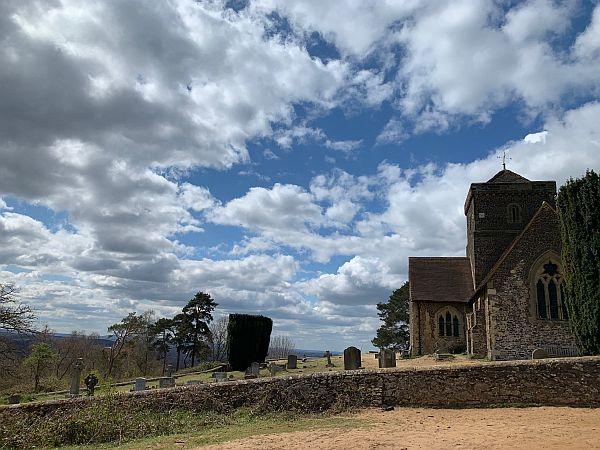
St Martha’s
Sitting there at St Martha’s, they heard the family move away and Bobby shot round the corner to see that it was indeed Sir George Edwards.
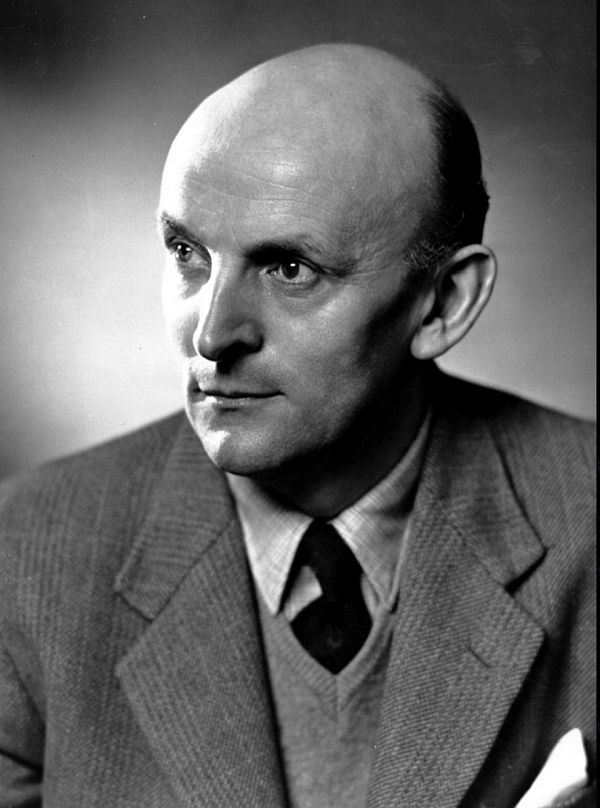
Walking back to his home on the adjacent hill of Albury Heights. He was one of Bobby’s heroes. A titan in the British aircraft industry, he was the boss of British Aerospace during the development of Concorde. Almost single handed at times, he defended the project against a British Government wavering in its desire to build the aeroplane with its French partners.
Regularly on television with a tight lipped, steely determination, he didn’t suffer fools gladly. When Concorde finally flew, it was as much his influence that ensured that an icon had been created for which this country assumed a national pride. Irrespective that it was shared with France and was never really a commercial success. It was possibly the most beautiful, most recognisable aeroplane that ever flew. You never said “It’s an Airbus” “It’s a 707″. You always exclaimed It’s Concorde!”.
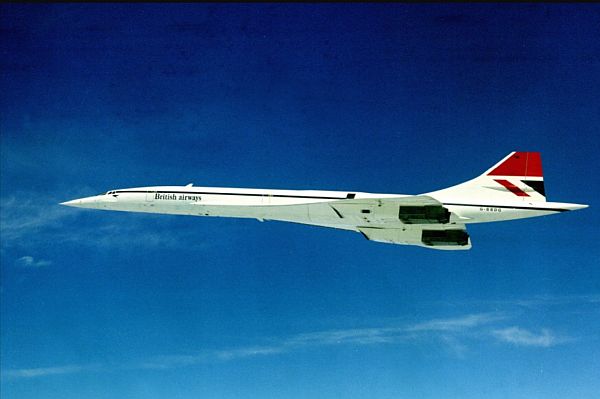
Even nowadays as a museum piece it is still space age and truly spectacular. Bobby never forgot that day at St Martha’s. Sir George Edwards voice was so distinctive he can still recall it today. The years passed by. The walking partnership ended, together with the picnics, cakes and beautiful shortbread. Bobby soon realised he preferred walking on his own.
Later, with Diddley, the love affair flourished in the knowledge that they both liked their own space. His in the hills on his own. This country and abroad. He had set himself a yearly challenge twenty years ago. Just once a year he would leave Laurel Cottage and walk to Guildford. Along the Greensand Way to Leith Hill, Holmbury Hill, Pitch Hill, Windmill Hill, Reynard hill. Then heading north to St Martha’s on the Hill and finally along the North Downs Way into Guildford. Returning by train.
He walked that walk in October 2003. Reaching St Martha’s late afternoon. Sat on that same seat in the evening sun and remembered the day, probably twenty years before, when he heard Sir George Edwards speaking.
But there was still a fair way to walk and he started off again walking round the front of the church to be confronted with a new grave covered by what seemed a magnificent slab of white marble. He had not heard about Sir George Edwards for years, but he knew instinctively it was his grave. And it was. The inscription summed it all up. “Fermite et tenacite”. “Don’t give up. Press on”.
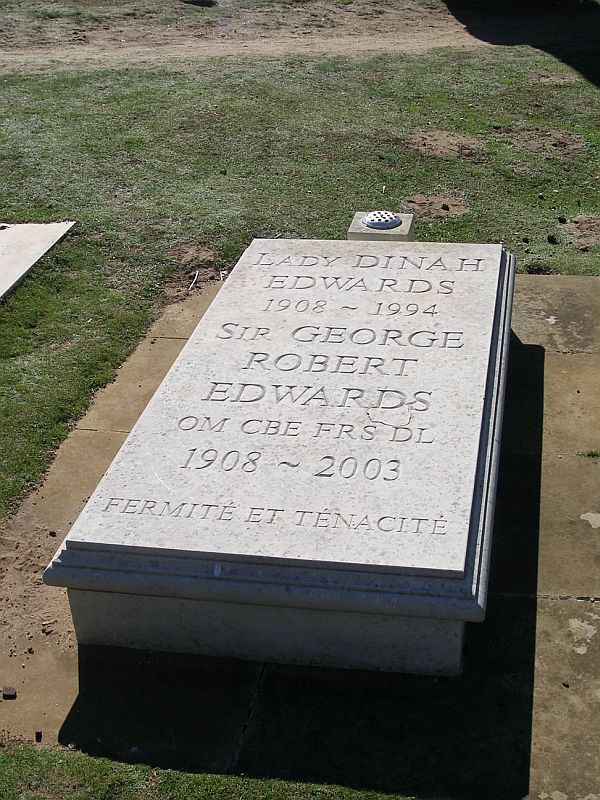
From humble beginnings he rose to the heights. Literally. And was married to Dinah for nearly 60 years until she died in 1994. Buried at St Martha’s, George in his old age struggled up the hill each week to lay flowers on her grave. And now they are together at St Martha’s.
It was all the more poignant for that very same month, October 2003, Concorde made its last flight. An icon died as Sir George Edwards was buried in the graveyard of St Martha’s on the Hill. On Bobby walked and suddenly, unbelievably, he heard a Merlin engine. A Spitfire flew over. No victory roll. Just a flypast in Bobby’s eyes. So moving that, in telling you this story, he can remember how he felt walking onto Guildford.
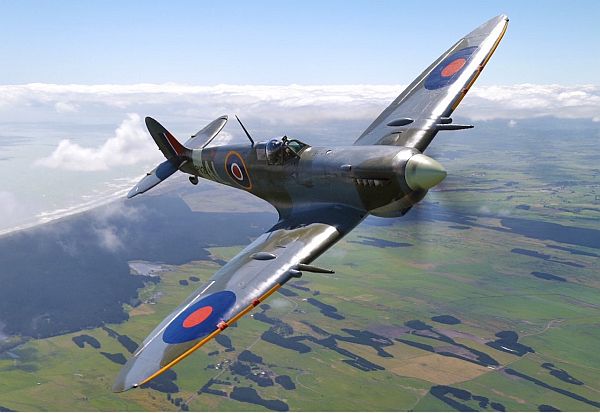
Spitfire.
Those long walks are over now. He is just as happy with the more modest adventures of today. And hadn’t been back to St Martha’s for quite a few years, until walking the Chilworth Gunpowder Mill walk took him up to St Martha’s on a beautiful spring day just a few weeks ago. Sitting on that same seat again, nearly forty years later, the memories came flooding back.
Walking round the front of the church, he expected to be confronted by a gleaming large slab of white marble. But instead the passing of the years has reduced the grave to just another. He didn’t need to search for it, but it seemed smaller than he remembered. And stood there thinking of Concorde and that Spitfire.
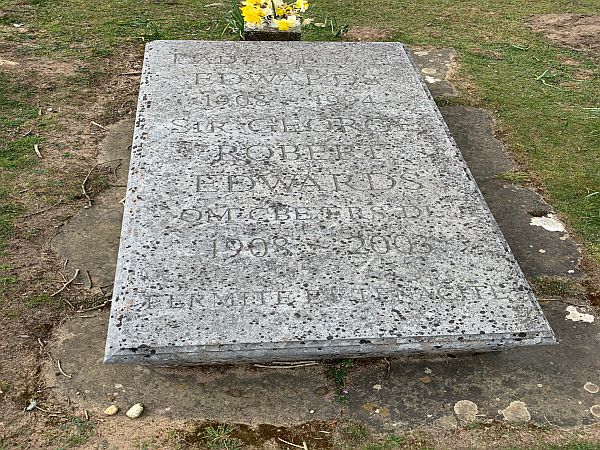
The grave today.
From Bouncing Bombs to Concorde
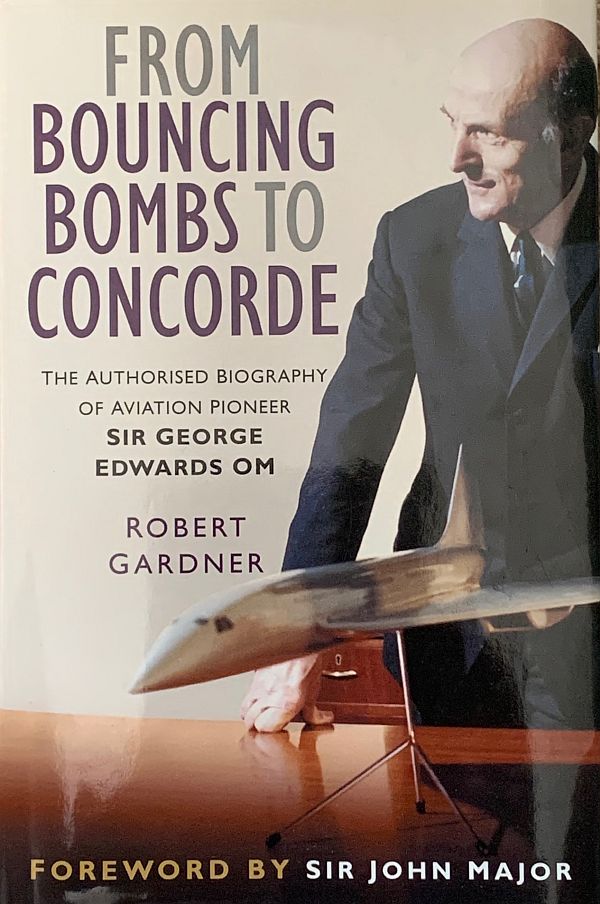
We can really recommend the biography of Sir George Edwards. But here is a quick timescale.
He started working for Vickers-Armstrong at Weybridge in 1935 and was part of the Barnes Wallis team during the war. Think back to the the film of the Dambusters and you may recall they couldn’t get it to work. The then young George Edwards used his cricket knowledge to dream up a solution.
Using the principle that a leg spinner bowler uses, he designed a cradle for the bomb that spun the bomb backwards at 500rpm. When it hit the water, it bounced the way they had hoped but hadn’t achieved.
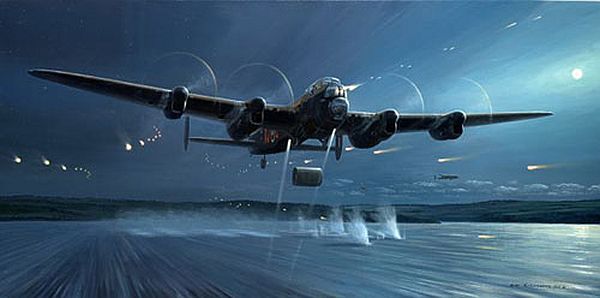
The bouncing bomb of the Dambusters Raid
Also during the war, the Germans laid magnetic mines at sea to devastating effect. Sinking many ships. Before a more permanent solution was found, George Edwards’ team invented a magnetic ring that they fitted to a Wellington bomber that blew up the mines – somewhat precariously for the crew flying the bomber very low.
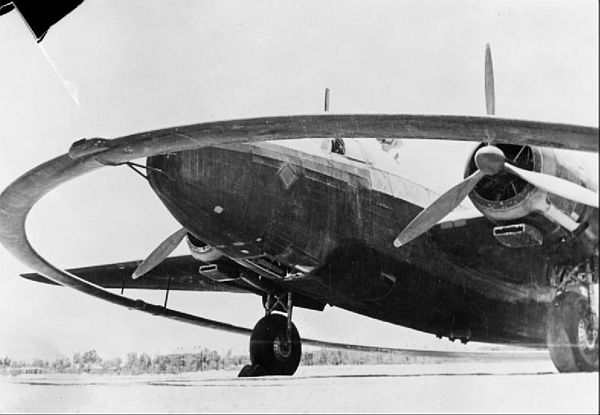
Wellington fitted with anti-magnetic mine equipment.
George Edwards became chief designer at Vickers and designed Britain’s first post war airliner. The Viking.
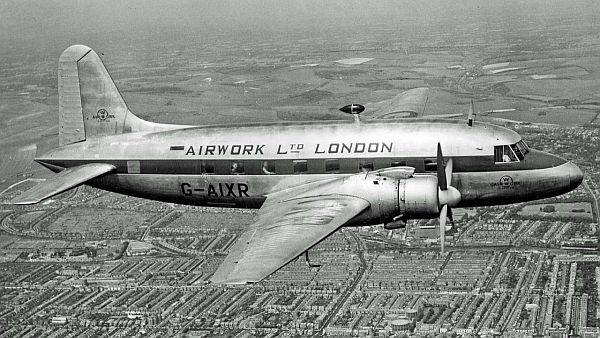
This led to two military versions: the Valetta and Varsity.
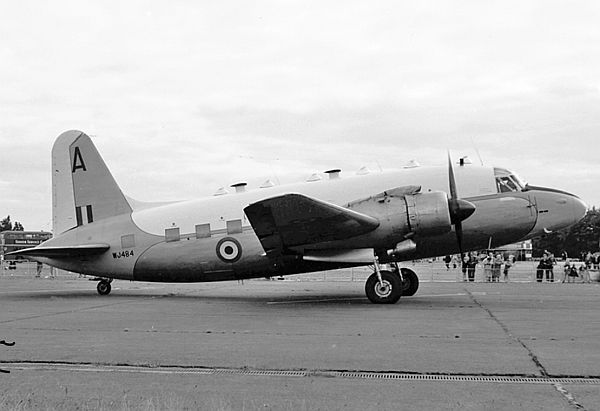
Valetta.
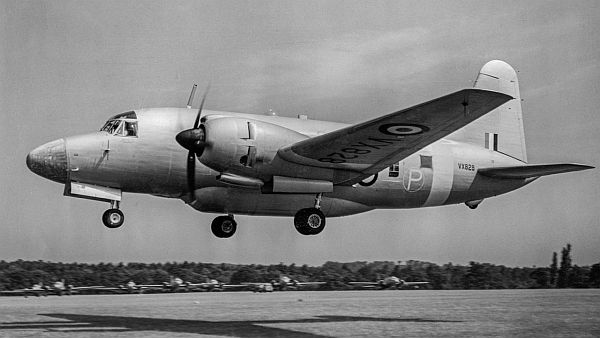
Varsity.
Then came their greatest success. The Viscount. Britain’s most successful airliner of all.
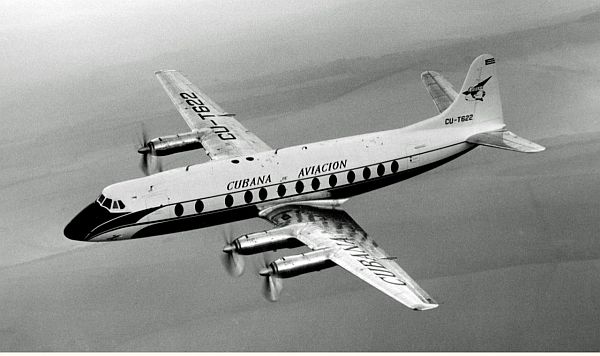
Viscount. (Bobby’s first flight in an airliner was in a Viscount. Memorable for those enormous oval windows).
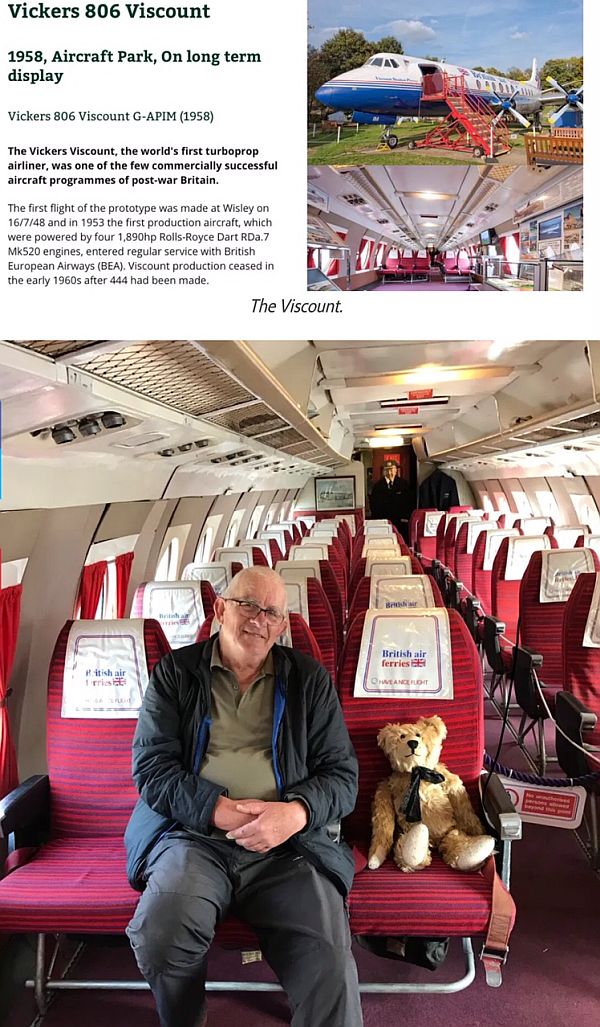
Remarkably that very same Viscount is now on exhibition at the wonderful Brooklands Museum (soon to reopen), where we have sat in in it once again forty years later.
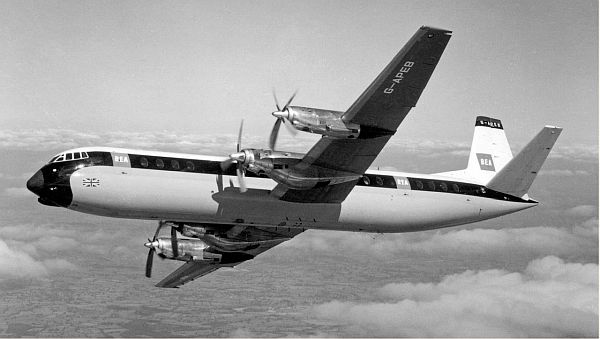
Then there was the Vanguard. A lovely plane but too late in what had become the jet age of travel.
Followed by the magnificent VC10.
George was still the boss when Bobby joined in 1962 to build the VC10 and hated every second of it and left on the third day. So Sir George Edwards was once his boss and Bobby “helped” in the VC10 programme…
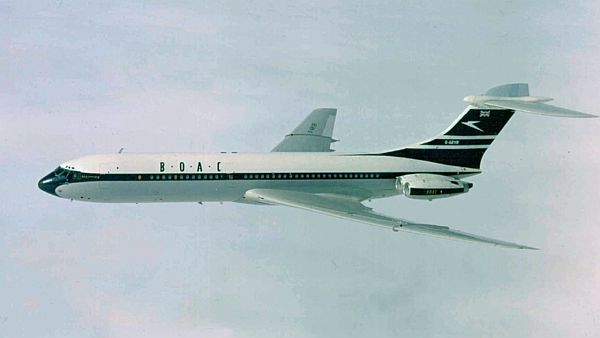
The VC10. A beautiful aeroplane.
The last airliner he was involved with was the BAC 111. A modest, if somewhat noisy, success.
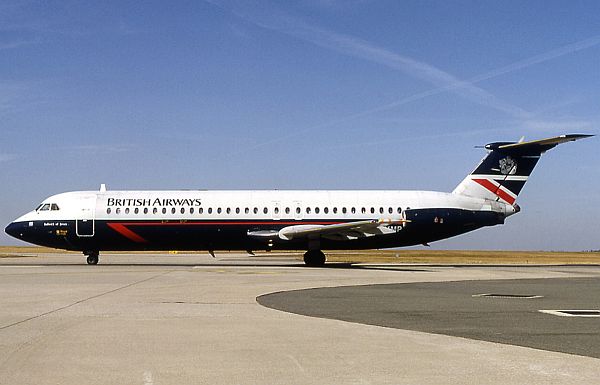
BAC 111.
Vickers-Armstrong built many military aircraft while Sir George was Chief designer and later the boss.
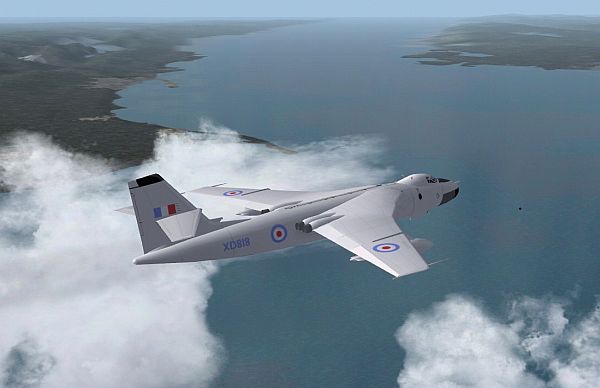
The Valiant… First of the V bombers that led to the Victor and the Vulcan.
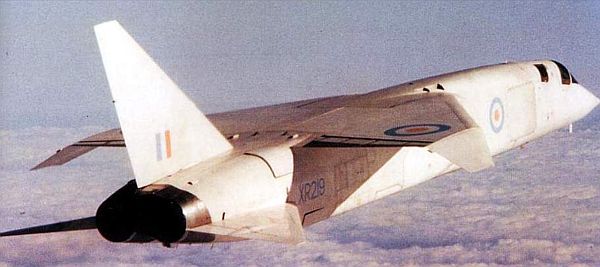
The ill fated TSR2. An exceptional aircraft that would rule the skies until the Labour Government cancelled it after it had actually flown.
We then entered the world of collaborations. Britain was too small to go it alone any more.
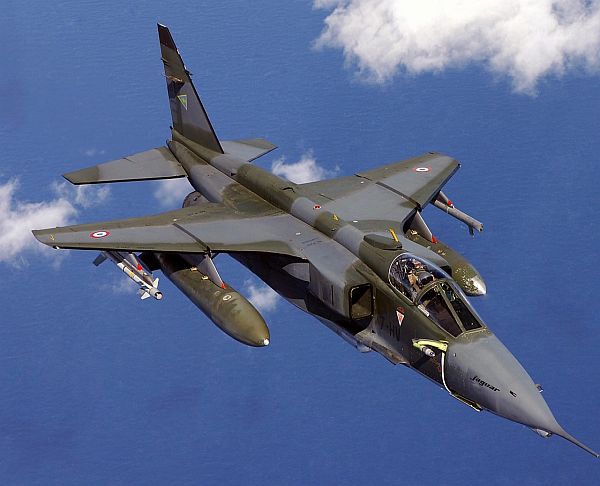
Anglo-French collaboration produced the Jaguar.
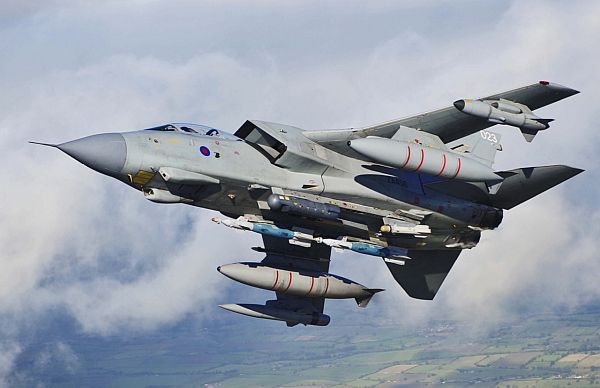
A European consortium the Tornado.
But, of course, it was Concorde for which Sir George Edwards will always be remembered.
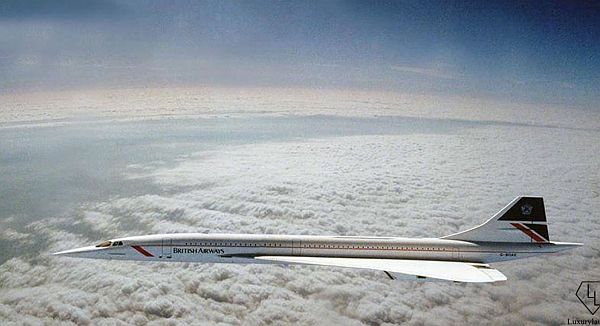
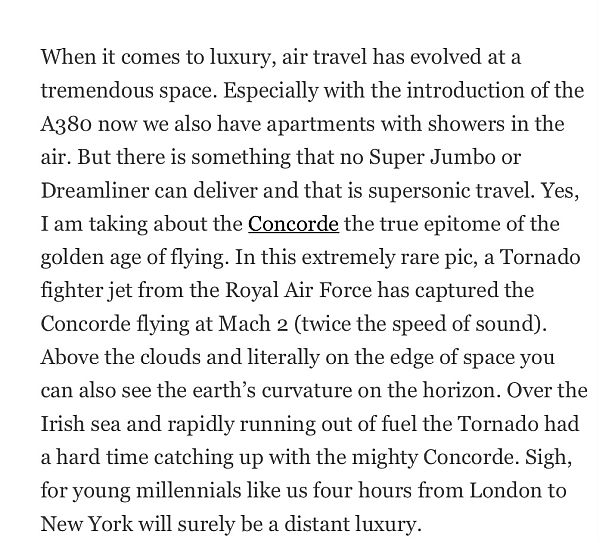
And we have our own personal memory of the wonderful aircraft, all tied up in the story of just one. G-BOAE.
Concorde G-BOAE
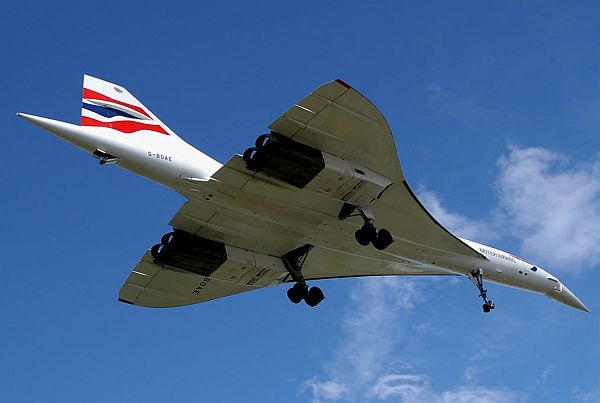
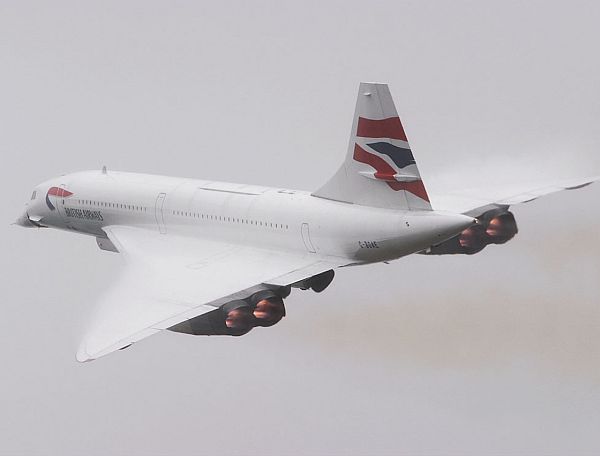
Imagine this. Bobby loves air shows. So do Andrew and JB. In 1998, they went to the biggest air show of all at Fairford in Gloucestershire. Notorious for the traffic, they stayed overnight in Chipping Camden and got to the air show very early. And discovered that a chartered flight with a Concorde was coming to the show from Heathrow.
A true airport announcement was made. “Announcing the arrival of British Airways Flight XXXX from London Heathrow”. We were right by the runway. What follows is encapsulated in the following video which is, of course, Concorde G-BOAE.
Who could ever forget Concorde. In later years they have celebrated that memory with formation team fly-pasts. The following one at Fairford, again in 2019. When the RAF and French Air Force joined together to celebrate the achievement.
G-BOAE last flew on 17 November 2003 to Barbados, where she had regularly flown in the past. To become a museum.
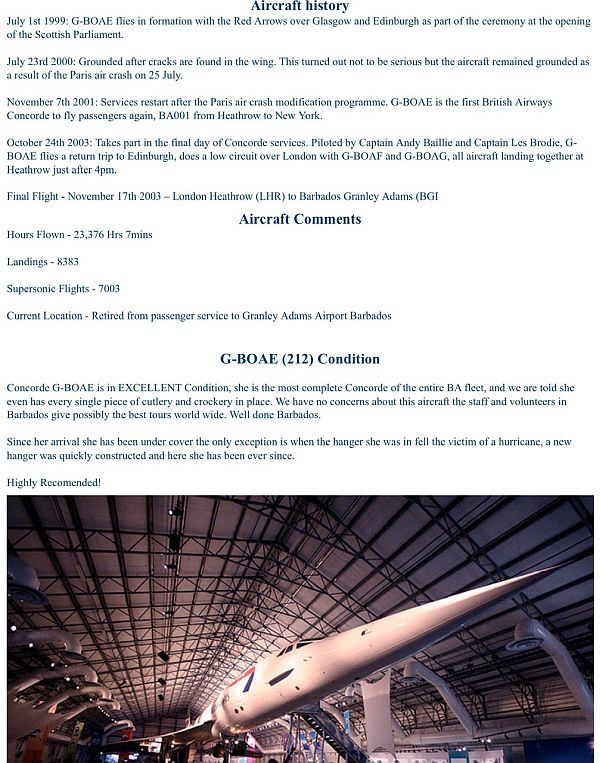
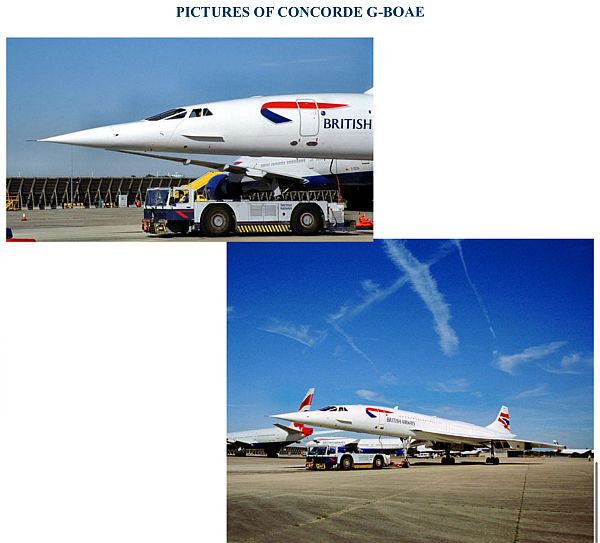
See Heritage Concorde site for the article above.
Just for the record again. G-BOAE.
23,376 Hours 7 minutes flying time.
Landings 8383.
Supersonic flights 7003.
What a fantastic record. Those of us who witnessed the whole Concorde saga from dream to museum piece will never forget. Most of us never flew in her or could afford to. It didn’t matter. In our eyes, this is the most famous plane ever built. And in the end it was down to just one man that it happened at all. Sir George Edwards.
Lighting a Candle for Diddley
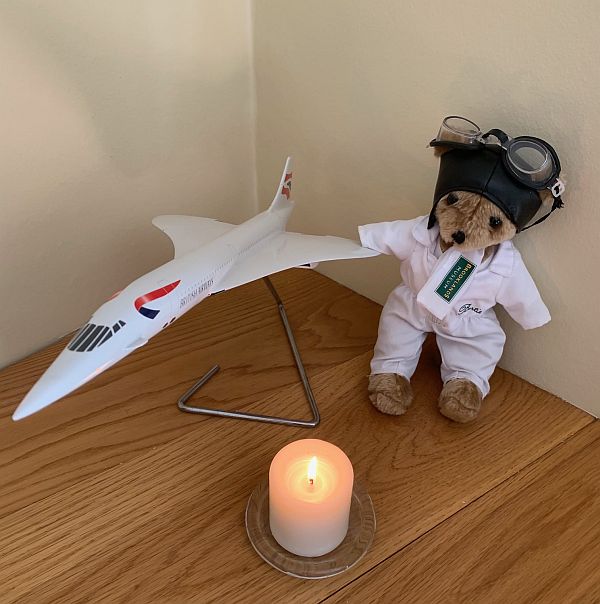
Brooklands Bertie.
– – – – – – – – –

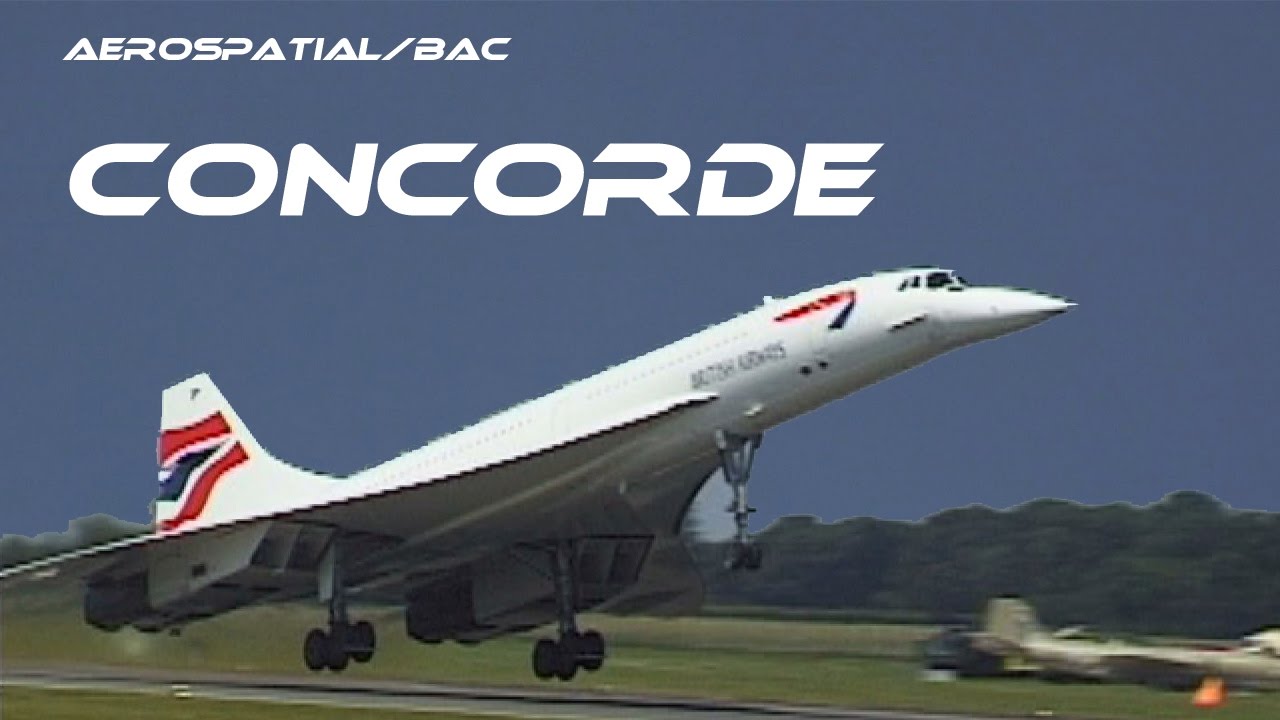



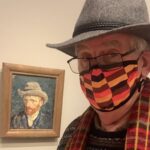
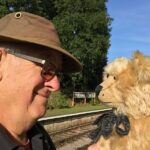
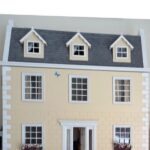

Leave a Reply